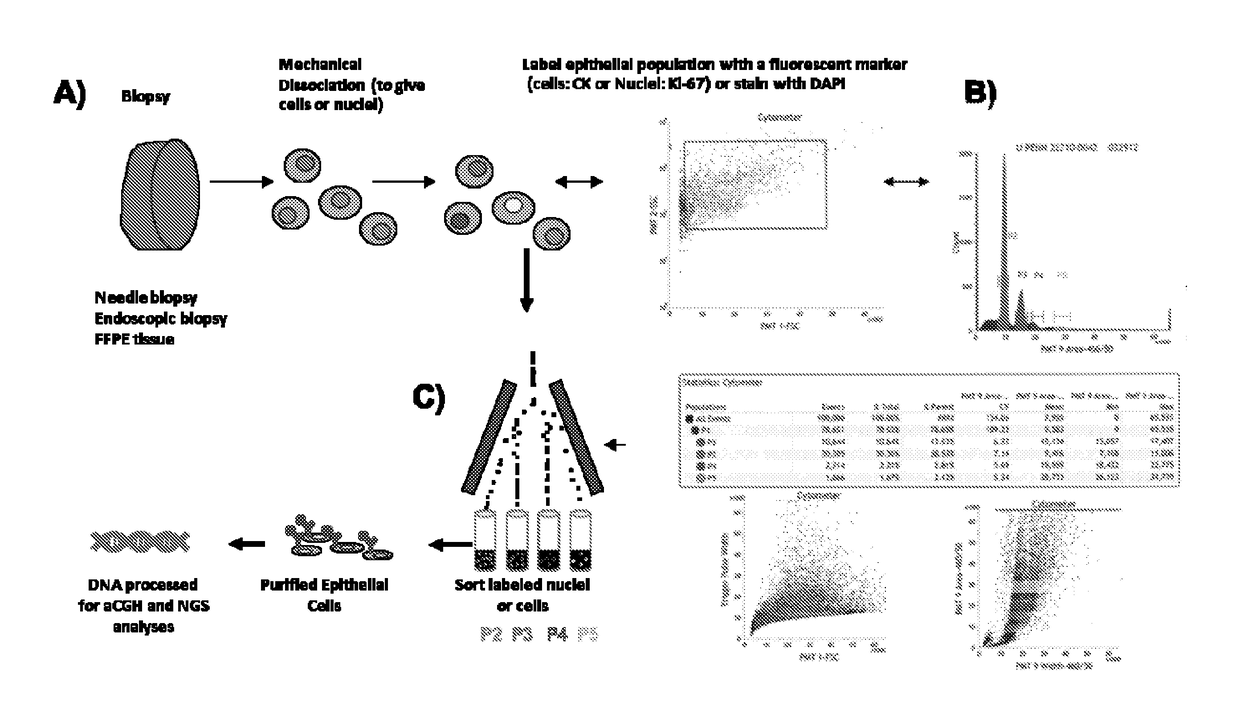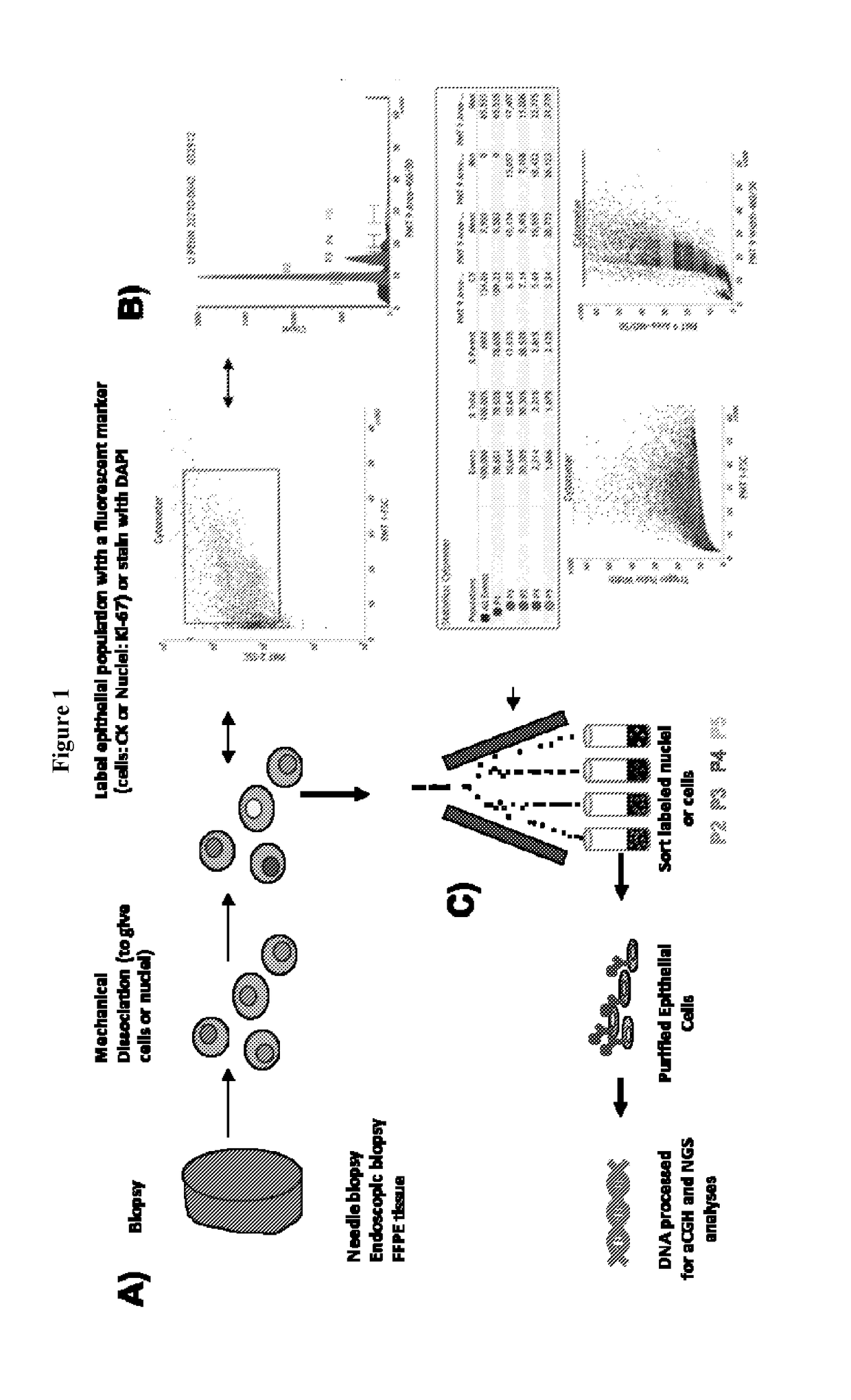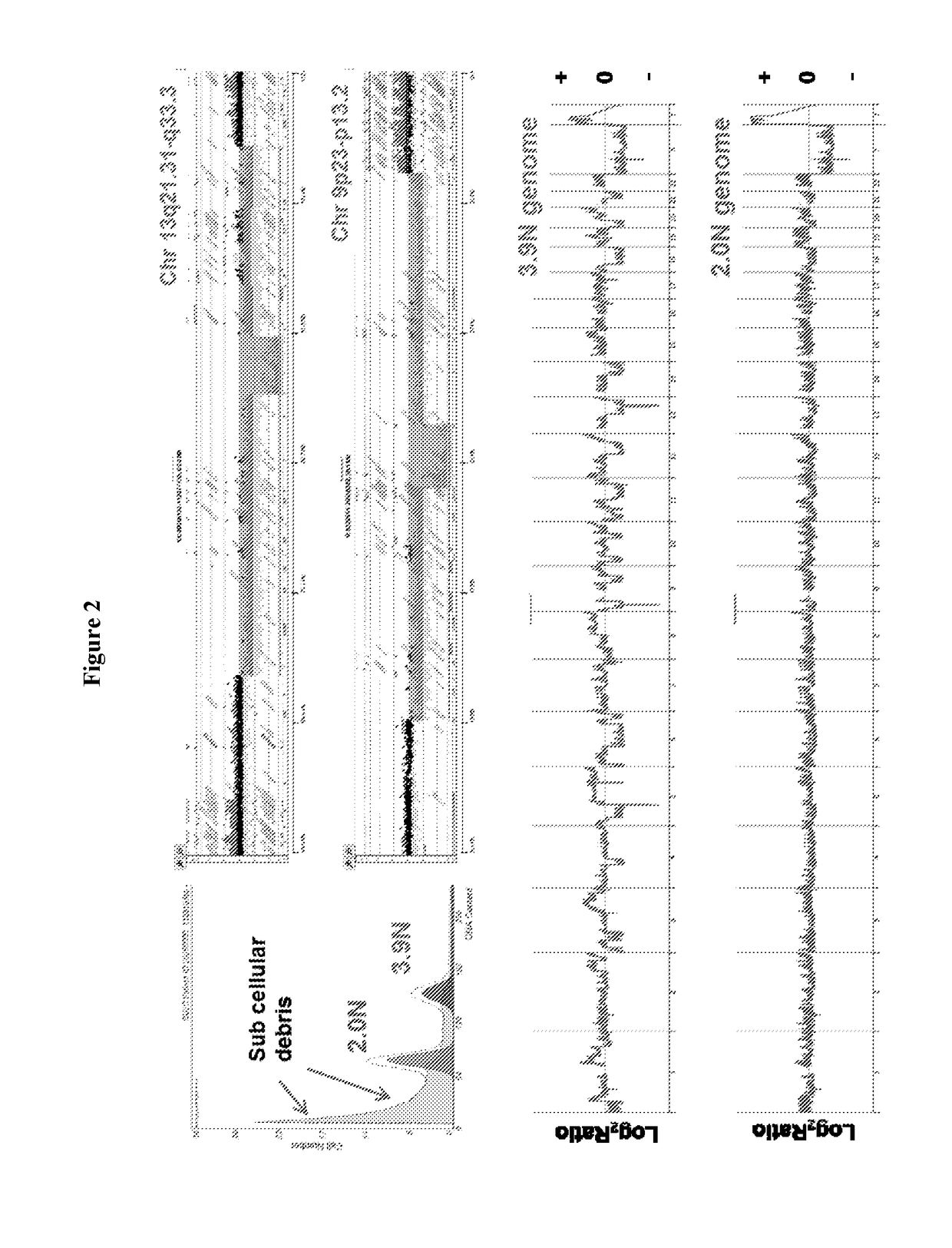Homologus Recombination Deficiency-Interstitial Aberration (HRD-IA) Assay
a technology of interstitial aberration and homologous recombination, which is applied in the field of identification of cancer subtypes, can solve the problems of affecting the success of particular cancer treatment, affecting the survival rate of patients,
- Summary
- Abstract
- Description
- Claims
- Application Information
AI Technical Summary
Benefits of technology
Problems solved by technology
Method used
Image
Examples
example 1
[0034]The clinical significance of our HRD-IA assay is highlighted in the analyses of a needle biopsy from a liver metastasis obtained in our recently completed Stand up to Cancer (SU2C) sponsored clinical trial of patients with PDA who progressed on prior therapies (FIG. 2). We sorted a diploid (2.0N) and an aneuploid (3.9N) population from the biopsy then profiled their genomes with aCGH. Notably there was a high level of subcellular debris detected in the sorting histogram (FIG. 2, upper left panel). This level of debris is frequently seen in heavily pre-treated tumors. The aneuploid genome had over 50 IAs that included 20 of 22 autosomes. Each IA was defined by the ADM2 step gram algorithm as a copy number aberrant interval with intrachromosomal boundaries. Barrett, et al., Comparative genomic hybridization using oligonucleotide microarrays and total genomic DNA. Proc Natl Acad Sci USA, 2004. 101(51): p. 17765-70; Lipson, et al., Efficient calculation of interval scores for DNA ...
example 2
[0039]In this example, we evaluated the use of sorted solid tissue FFPE samples by selecting PDA samples with matching FF material. In each case, we sorted a minimum of 50,000 aneuploid and diploid nuclei from the FFPE samples and a minimum of 10,000 nuclei from the same populations in the matching FF samples. The width of the histograms for the diploid and aneuploid (3.2N) peaks in a liver metastasis was greater for the FFPE sample likely reflecting the lower quality of the sample relative to the FF sample (FIG. 5). DNA from the sorted FF sample was prepared by our methods. After hybridization and feature extraction we used the ADM2 intervals to measure the reproducibility of aCGH data in the matching FFPE and FF samples. Two intervals were called similar if their genomic regions overlapped by more than 0.5. The overlap of two intervals is defined as the genomic length of their intersection divided by the genomic length of their union. We selected the top 20 ranked amplicons in the...
example 3
[0040]This example shows additional results of HRD-IA assays on homologous recombination deficient (HRD)-positive triple negative breast cancers (TNBC) that were BRCA wild type. Triple negative breast cancer refers to a cancer cell population diagnosed as lacking receptors for estrogen, progesterone and human epidermal growth factor (Her2), denoted ER-, PR-, and HER2-, respectively. In some embodiments, triple negative breast cancer cells have low to 0 levels of detectable receptors for estrogen and / or progesterone, and / or HER2 receptors.
[0041]FIG. 6 shows an example of a HRD-IA assay-using patient TNBC-1 (i.e. MET694) samples. An exemplary result is shown for TNBC-1's human Chromosome 17 in the area of 17q23.2 using BRCA2wt triple negative breast cancer cells. These results show a homozygous deletion of BRIP1 (a regulator of BRCA).
[0042]FIG. 7 shows an example of comparative HRD-IA assay-using patient TNBC-2 (i.e. PAD758) samples. An exemplary result is shown for TNBC-2>50 between ...
PUM
| Property | Measurement | Unit |
|---|---|---|
| Electrical resistance | aaaaa | aaaaa |
| Sensitivity | aaaaa | aaaaa |
| Content | aaaaa | aaaaa |
Abstract
Description
Claims
Application Information
 Login to View More
Login to View More - R&D
- Intellectual Property
- Life Sciences
- Materials
- Tech Scout
- Unparalleled Data Quality
- Higher Quality Content
- 60% Fewer Hallucinations
Browse by: Latest US Patents, China's latest patents, Technical Efficacy Thesaurus, Application Domain, Technology Topic, Popular Technical Reports.
© 2025 PatSnap. All rights reserved.Legal|Privacy policy|Modern Slavery Act Transparency Statement|Sitemap|About US| Contact US: help@patsnap.com



